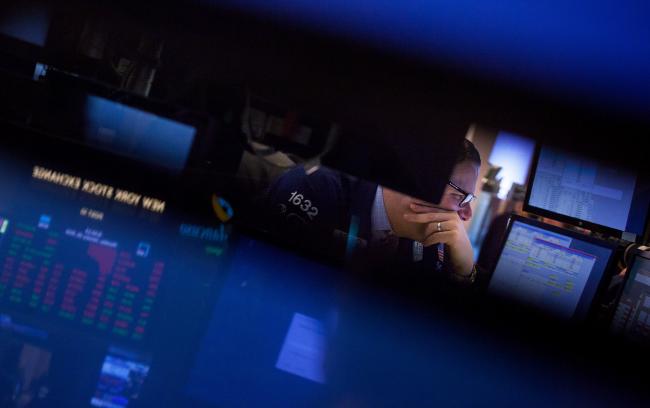(Bloomberg) -- Investors fleeing risk have boosted the global mountain of negative-yielding bonds to almost $17 trillion. Putting money into assets guaranteed to return less than their face value seems like a fool’s errand -- but there are ways they can be traded for a profit.
The most simple is to hope the price keeps going up, but there are a number of more sophisticated trading strategies. Most of these revolve around ensuring the cost of funding is even lower than that of the yields, for example, by using swap markets or currency forwards. In many cases, the shape of the curve is just as important as the outright yield level.
Here are three of the ways traders are making money in a negative-yielding world:
Borrowing over a relatively short time period and putting the money in longer maturities where yields are typically higher is one strategy to produce returns even when rates are below zero. The way to maximize returns from doing this is to use a “carry and roll” strategy.
The “carry” is the coupon of the bond being bought, while the “roll” is the capital appreciation that can be earned on the security as it slides down the yield curve toward maturity.
The chart above shows how traders can make a positive return through carry and roll in the Spanish bond market, even though yields of up to eight years to maturity are below zero. They can borrow at the Spanish three-month repurchase rate, currently around minus 0.4%, and earn around 3.5 basis points for three months in combined carry and roll by buying 10-year debt.
Another way to extract returns from negative-yielding bonds is through currency hedging. Rising demand for dollars means investors who can have funds in the U.S. currency can generate positive returns from sub-zero yields in Europe and Japan.
Lending dollars for yen via three-month currency forwards earns an annual yield of almost 2.60%. The investor can then plug the money into a haven asset, such as Japanese 10-year bonds, which yielded minus 0.235% late Friday in Tokyo, making a return of about 75 basis points above that of 10-year Treasuries.
Do the same thing except borrow in euros and an investor can earn more than 2.70% a year from German bonds. If the money is invested into Italian debt, the return surges to over 4%.
The focus on the shape of the curve is also key for investors. A steeper one creates the opportunity to borrow in the short term and invest in longer maturities.
In Japan, the six-month yen Libor rate -- the price at which banks theoretically borrow from each each other -- is minus five basis points, whereas the 20-year yen swap rate is positive 11 basis points, offering a pick up of 16 basis points.
Contrast this with the U.S., where six-month dollar Libor is about 2.03% and the 20-year swap rate is being quoted at just 1.59%, around 40 basis points lower.
The flattening of the U.S. curve may end up sending funds to a number of other markets that offer a steeper alternative -- just one of the ways traders are looking to get creative as the amount of negative-yielding debt swells to new records.
